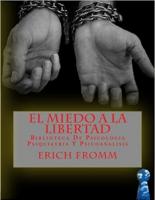The 12 main minority Romance languages
Romance languages is one of the most widespread linguistic families on the planet. A handful of them are languages spoken by more than a billion people around the world, exerting great influence.
But the history of all of them did not differ much from other languages that today are in clear decline. Some other Romance languages have already disappeared, such as Dalmatic, spoken until the 19th century on the Adriatic coast. Today we review which are the main minority Romance languages that remain in the world.
- It might interest you: "The 9 types of language (human and nature)"
The 12 most important minority Romance languages today
Europe has seen multiple languages born from Latin. All of them evolved from this mother tongue in small territories of the European continent. Over the centuries, a few managed to reach the linguistic domain of vast territories, while others did not go beyond their historical confines.
Today we talk about those minority Romance languages that still survive. Some of them enjoyed splendorous times, such as Occitan or Venetian. Others never even had a literary movement of their own. But the preservation of all of them represents a treasure for the linguistic heritage of humanity.
- We recommend this related article: "The 7 main Romance languages of the world"
1. Aragonese
This language first emerged in the Aragonese Pyrenees area and during the Middle Ages it had quite an influence beyond Aragon. It was one of the official languages of the Crown of Aragon. Aragonese and Catalans came to form a true Mediterranean power in the 13th century. Today it suffers a great setback.
2. Asturleonian
Asturleonian was the most widely spoken language in the Kingdom of León, in present-day Spain. Today it is in clear decline. The emergence of Spanish as the dominant language in the Spanish territory has made this language less and less spoken.
3. Corsican
Corsican is essentially spoken on the island of Corsica, although it is also spoken in northern Sardinia. Its origin is in Tuscan, and it had a very close link with the origins of the Italian language. However, being under the rule of France for centuries, the links with the Italian were lost. It is currently recognized as a co-official language in the region.
- Maybe it might interest you: "How to learn English: 10 tips to learn it quickly"
4. Francoprovencal
The Franco-Provençal or Arpitan language belongs roughly to the border area between France, Switzerland and Italy. This area is known as Arpitania, and contains such important cities as Geneva, Lyon, Grenoble or Saint-Étienne. Unfortunately it is estimated that there are no more than 150,000 speakers of Arpitan today.
5. Lombard
Historical language of the rich region of Lombardy, today it is in clear retreat. It is spoken by very few people in this region, who see how in the metropolis that is Milan practically everyone communicates in Italian (or English or other international languages, of course).
6. Mirandés
This language appeared through Asturleonian speakers who participated in the Reconquest and settled further south. Currently it is spoken by very few people. Its most important area of influence is West Extremadura and the contiguous area in Portugal.
- It might interest you: "The 7 best Portuguese fado songs"
7. Neapolitan
This language evolved in Campania and different adjacent territories of central and southern Italy. In addition to Italian, Greeks, Byzantines, Normans, Catalans, French and Spanish have historically influenced this language. Neapolitan has never enjoyed the status of an official language in any territory despite the fact that it is currently spoken by about 11 million people.
8. Occitan
Occitan was the first vulgar speech that had literary prestige after Latin, being a reference for other linguistic areas. It evolved roughly in the southern third of what is now France. It maintained many similarities with Catalan, although in recent centuries it has experienced a lot of diglossia with French (and Catalan with Spanish).
9. Piedmontese
Piedmontese is a language that today is spoken only in some parts of Piedmont, in Italy. Despite being a language that has suffered a lot of regression, in the past it was the main language of the most important kingdom of the Kingdom of Sardinia, which led the unification of Italy (1859-1870).
- You may want to read: "How to make a perfect risotto with 3 delicious recipes"
10. Romache
By Romansh a group of languages spoken in Switzerland is known, having official status in the Swiss country. It is a milestone for a language that does not reach 100,000 speakers. It has many connections with Ladino and Friulian, other Romance languages in clear decline that are spoken in areas between the Alps and the Adriatic Sea.
11. Sicilian
Sicilian is the language of the island of Sicily, although other southern Italian speakers are related to it. Historically it has received influences from Greek, Catalan, Spanish, French, Arabic, and especially from Italian. The everyday and informal use of Sicilian is common, although it is not used at the administrative level.
12. Veneto
Veneto is spoken today in northeastern Italy and in some areas of Slovenia and Croatia. The language that evolved in these territories from Latin, and in its day it was a very influential language throughout the Mediterranean Sea. The Republic of Venice was one of the most important political entities in the history of the Italian and Mediterranean peninsula (697-1797).
- It might interest you: "The 15 most beautiful places in the world to visit"
Bibliographic references
Leonard, C.S. (1964). Proto-Rhaeto-Romance and French. Language. 40 (1), 23–32.
Harris, M. and Vincent, N. (1988). The Romance Languages. London: Routledge.
Melillo, A.M. (1977). Profilo dei dialetti italiani: Corsica. Pisa: Pacini Editore.
Grassi, C., Sobrero, A. TO. and Telmon, T. (1997). Fondamenti di dialetologia italiano. Roma-Bari, Editori Laterza.


